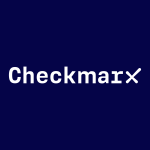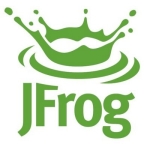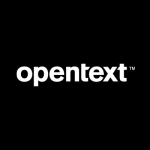What is our primary use case?
We use Veracode mainly for identifying any vulnerabilities in the software. We do a lot of development, and before we deploy any product to our client environment, we want to make sure there are no vulnerabilities in the code and also follow best practices.
We run scans to identify the criticality of these bugs and vulnerabilities, and we try to mitigate them. If it's not possible, we get an exception. At least we are aware of the vulnerabilities in our code, making sure our code is secure and not exposed to any threats like hacking.
How has it helped my organization?
In my organization, we have a policy in place. Every company has a different policy; at least our company has specific requirements where we expect everyone to build the tool or the software to some extent, following some best practices.
Veracode helps us embed those policies into the scan. When we run the scan, the administrators have already set the policy, defining what needs to be checked and what can be ignored. It helps us when we run the scan because it provides a score based on the policy level. This score certifies how well the tool has scanned the code.
We can then show this certification to demonstrate that the product meets the required standards and can be trusted without any issues. So, we are working with the solutions policy reporting to ensure compliance with the industry standard.
For our product, we use static analysis. We're not using any agent-based solutions, but we are planning to hook it into the CI/CD pipeline in the future.
Veracode has been helpful because, in the past, we used to integrate Veracode scanning into our CI/CD pipeline. Sometimes, what happens is a junior developer sees a third-party library and thinks, "Oh, this tool is helpful," and they bring it into our system to build something.
However, even if it's a third-party tool, we don't know what vulnerabilities that code may have. At least now, whenever we push code, Veracode can catch any vulnerabilities, and if it fails our build, it prevents us from deploying that code into our environment. It clearly states, "This code has a vulnerability; I can't deploy it." So, it effectively blocks us from deploying risky or vulnerable code in our tool. It helps us quickly assess the risk of third-party tools and take action promptly instead of building something and realizing two months later that we need to go back and fix it. That's not going to happen; we can identify and resolve issues within a day.
The tool is great in terms of ensuring our code is clean, recommending best practices, and capturing the flaws in third-party components.
Veracode has an impact on our organization's overall security posture. Because when we do development for internal purposes, we don't run a Veracode scan very often. But when we work in a client environment, if they want us to build something for them, we absolutely need to ensure that we haven't introduced any flaws or problematic code into their system.
Veracode helps us maintain the reputation and branding of our company, which is crucial for us. It's important to ensure the code is free from vulnerabilities and not exposed to hacks. It is very important to us.
What is most valuable?
The most valuable feature is Veracode SDP, which allows for something related to third-party vulnerabilities. When we build a product, we use a lot of third-party libraries instead of building everything from scratch. We just use a library which has already been built; we just use that component in our product. Sometimes, these libraries may have bugs or issues, and it's hard to keep track of them because we use thousands of them.
Veracode's tool scans every single library and gives a dashboard showing the number of libraries, high and low criticality issues, and whether a product has any issues. It helps us assess the libraries and decide whether to resolve the issues or replace the library to minimize risks.
I like the solution's ability to prevent vulnerable code from going into production. It does a pretty good job in most cases, but I have seen a few false positives in the code scan. It means that sometimes, like recently, we run a scan where we encounter a part of JavaScript code where it's just a string evaluation. Despite not posing any real threat, the system flagged it as a potential vulnerability, suggesting it could be exploited to hack into the system. We looked into that code and found it wasn't the case; it was a false positive. It wasn't a big issue because we reported it to Veracode, and they made an exception and resolved it. It does a pretty good job, but sometimes it can be very misleading.
However, the solution's false positive is not a big deal because it's very minimal. Veracode does a very good job, but 99% of the time, it works well. Only, like, 1% - 2%. Like, sometimes we manage false positives. It's not a big blocker as well. Every software is not perfect. Also, these are very minimal fixes. Sometimes, if we raise a support ticket to mitigate this issue, the response is also pretty good, and it can be resolved within one or two days. So it's not that big of a deal.
What needs improvement?
One area for improvement is the navigation in the UI. For junior developers or newcomers to the team, it can be confusing. The UI doesn't clearly bundle together certain elements associated with a scan. While running a scan, there are various aspects linked to it, but in the UI, they appear separate. It would be beneficial if they could redesign the UI to make it more intuitive for users.
In future releases, I would like to see some features. For example, there's a library we use as a third-party library. Sometimes, Veracode indicates that we can't use a particular tool because it has a lot of vulnerabilities in the code. It would be nice if Veracode's scan could show an alternative library to use instead of the one flagged as problematic
So instead of us having to go back and research, trying to figure out what other tool we can use as an alternative, if Veracode could provide those recommendations within the tool itself, it would be nice.
For how long have I used the solution?
I've used the product for almost three to four years, but it's been a while since I haven't used the tool. But I started using this solution again. I started working on it again in the past month.
What do I think about the stability of the solution?
Veracode is 100% stable. We haven't encountered any issues.
What do I think about the scalability of the solution?
It is a scalable solution. Veracode has a concept called Sandboxes, which is an amazing feature and pretty useful. I can kick off multiple scans, and they all run independently. There's no interference between scans. So, it's highly scalable, and we haven't had any issues with it. It is good.
For our team, we currently use it for two projects.
How are customer service and support?
I've personally interacted with the customer service and support recently for a few issues, and their support is amazing.
How would you rate customer service and support?
How was the initial setup?
The initial setup is very easy. It's not that complicated.
Moreover, the false positive rate of static analysis can affect the time spent on tuning policies. It took at least one day for me to raise that mitigation and approval ticket to look into it. Veracode needed to spend, like, six to eight hours, which essentially goes up to a day to resolve it.
The solution has 100% helped our developers save time. 100% right now in terms of ensuring the code is good and deploying it safely. Veracode definitely helps us be very confident when we go for product releases. It has helped our developers save time.
As a lead developer, it takes me one or two days to set up everything in Veracode scan. Once it's set up, the junior developers don't need to do a single thing. They just push their code, and they don't even realize that a scan is running in the background. So they don't need to worry about it. However, in terms of readiness for the production release, Veracode definitely helps us be confident and quickly identify the risks. There's a huge benefit in that area.
What about the implementation team?
In the beginning, two or three years back, we were pretty new to Veracode, and we did seek help from the Veracode consulting team. Their support is amazing. If I send an email for any help, they respond within 30 minutes. Their response time is good, and they provide clear guidance.
I've personally interacted with them recently for a few issues, and their support is amazing.
So, initially, we did take consultation when we set it up, but once we became comfortable and familiar with the process and the documentation was also clear, we started managing it ourselves.
For the implementation process, a developer pushes changes to the master branch or a feature branch the first step is to trigger the Veracode scan in the CI/CD pipeline. We use Azure DevOps for this.
The next step is to include the code in the Veracode scan. This is the second step. Before going into further steps like building the Docker image and containerizing the application for deployment, we have a condition in place. If the Veracode scan doesn't complete successfully, we don't proceed to the next step, and the entire build fails.
We don't need a lot of members for the deployment part. It's only me and my technical expertise, like, one or two people. Any DevOps is enough.
We don't see much need for maintenance. It's pretty easy to manage. Veracode is also maintained by a dedicated team internally, and they provide support for everyone within the organization. So, if there are any upgrades or maintenance required, they take care of it. But from our team's perspective, there's no need for ongoing maintenance. We set it up once, and that's it.
What's my experience with pricing, setup cost, and licensing?
The solution reduced the cost of the development setups for your organization. It is a key feature of Veracode. Once you set it up for the first time and integrate your CI/CD pipeline with our DevOps cycle and the Veracode scan, it takes two or three days to set it up initially.
But after that, it's a one-time effort. You don't need to do anything further. You need to kick off the pipeline, and it runs the scans automatically, providing artifacts for you to review in the report. So it helps in the long run. Once you have your project set up correctly, there's no need for manual intervention at all once it's hooked up. It's a significant long-term benefit.
Which other solutions did I evaluate?
We have a dedicated team that handles research, but I personally have only used Veracode for scanning. Our team used to use SonarQube.
Our company used to run both Veracode and SonarQube scans for certain projects. Sometimes, some of the scans were not included in Veracode, so the team used SonarQube for those. However, this was quite a while ago, about two years back.
What other advice do I have?
I would suggest starting Veracode scans at the earliest stage of development. It's crucial to catch vulnerabilities and risks early on so you don't invest too much time building something only to realize later that it can't be used due to a lot of issues, especially with third-party components. Using these tools as early as possible will benefit you in the long run and allow you to ship your product more quickly.
Overall, I would rate the solution a nine out of ten.
Which deployment model are you using for this solution?
Public Cloud
If public cloud, private cloud, or hybrid cloud, which cloud provider do you use?
Microsoft Azure
Disclosure: PeerSpot contacted the reviewer to collect the review and to validate authenticity. The reviewer was referred by the vendor, but the review is not subject to editing or approval by the vendor.























